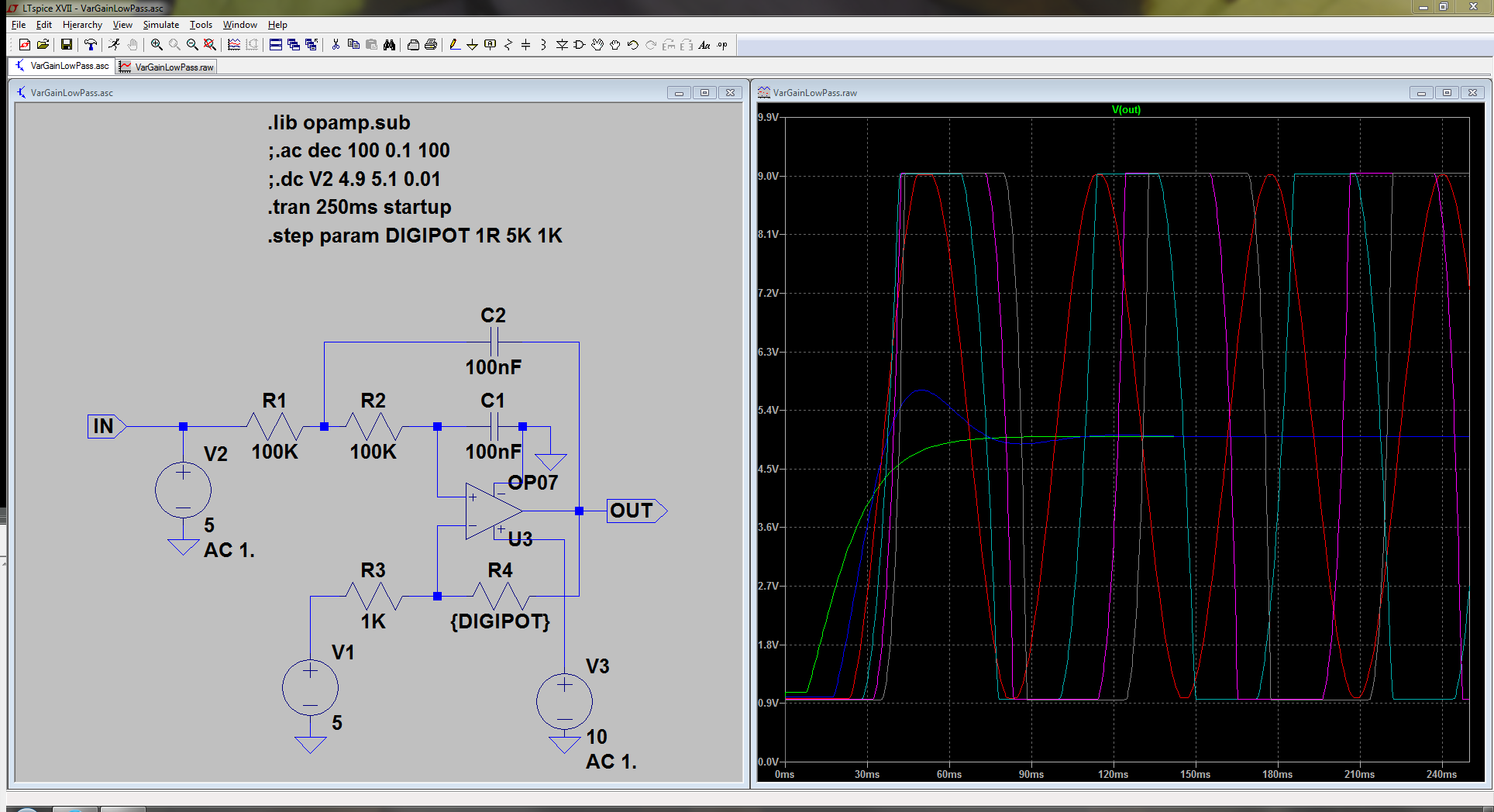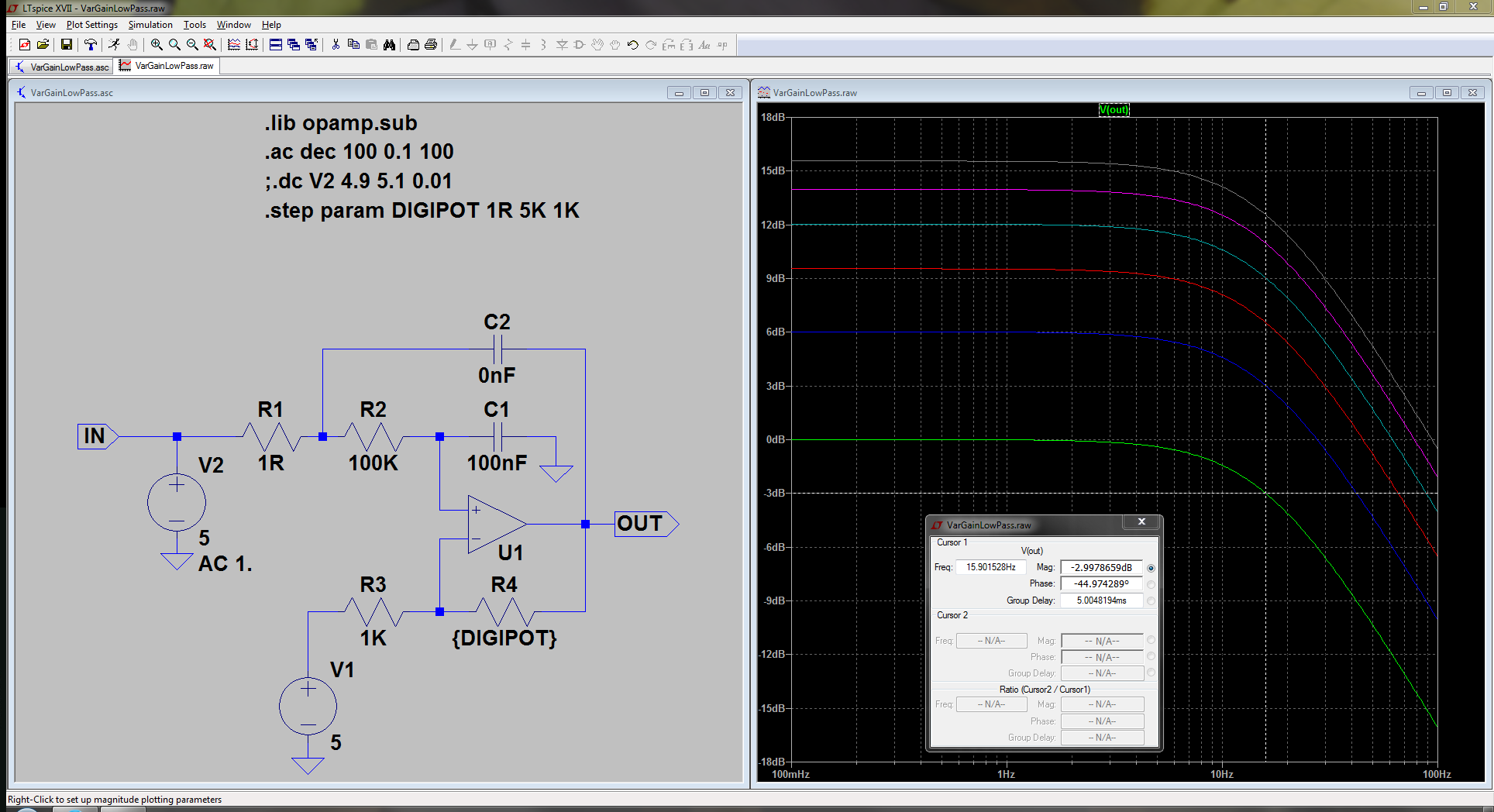When I was working on one of my projects I needed to filter analog signal above 10Hz... or above 1000Hz... whatever. Well I decided to add a second order low pass filter instead of simple first order to get rid of that ugly and nasty noise :)
General Sallen-Key low pass filter topology is nice, with some symmetry it is very easy to calculate gain, time constant and other stuff. It was working as expected until variable gain possibility was added.
Here Im going to mention filter quality factor Q which is a design parameter of filters. Q provides a measure of sharpness to the stage frequency response. High Q implies a very narrow sharp frequency response. Low Q provides a wide shallow frequency response. But high Q makes an oscillator from your filter, which I wasnt aware of :) See below what I have designed and constructed and the simulation in LTSpice (great piece of software - thank you guys) of a violent oscillations with higher gain :) Transient simulation of frist 250ms after startup, while stepping feedback resistor value to set gains to 1x, 2x, 3x, 4x, 5x, 6x. Anything above 2x oscillates.

This was just an inspiration to see what can go wrong with active filters of higher order. I recommend you to read free document from Texas Instruments: Active Filter Design Techniques (excerpted from op amps for everyone).
 kevarek
kevarek

Discussions
Become a Hackaday.io Member
Create an account to leave a comment. Already have an account? Log In.